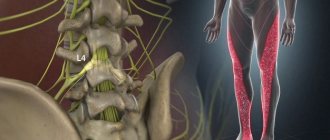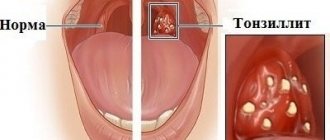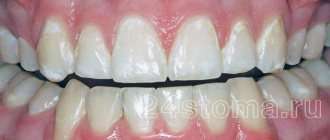In a healthy oral cavity, only the crown part of the tooth is visible. However, for a number of different reasons (age-related changes, periodontal diseases, etc.), over time, gum recession may occur and develop - a decrease in the volume of its tissue, leading to exposure of the tooth root - not only the dental crown, but also the tooth itself becomes its visible part. root. At the symptomatic level, the problem may manifest itself in the following signs and symptoms:
- visual lengthening of teeth due to the appearance of a bare neck and root;
- growing spaces between teeth due to gum recession;
- change in the color of the tooth, since its cement part becomes visually open;
- the appearance of caries below the gum level;
- increased sensitivity of teeth;
- bleeding gums when brushing teeth.
Causes of inflammation
As a rule, inflammation of the root part of the teeth is provoked by two factors - infection and trauma to the jaw and dental units.
In turn, the development of infections leads to:
- Untimely elimination of advanced caries.
- Incorrect treatment of pulpitis.
- A poorly made and then installed crown, under which food debris penetrates. When they decompose, they lead to the growth and reproduction of bacteria.
- Injuries to the gums due to an incorrectly installed crown or prosthesis. More often, these areas are visible as bleeding, scarlet-red, and swollen.
- Frequent diseases of bacterial sore throat.
- Chronic sinusitis, provoking the growth and reproduction of pathogenic flora.
In all of these cases, the root also becomes inflamed, since pathological processes are transferred to it.
As for injuries, as causes of pathology, these are:
- An incorrectly filled tooth, on which the load increases when chewing.
- Fractures that occur after injuries to the jaw, incorrectly installed crowns.
- Increased tooth mobility that occurs due to injuries to the nerves or vessels of the root canal.
- Excessively high crown restored from composite materials.
- The use of “old” antiseptics to treat canals that are inflamed (we are talking about arsenic).
Regardless of the cause of the development of the inflammatory root process, the patient experiences obvious discomfort and constant pain.
Why do dental problems start?
Many people believe that dental problems are the lot of older people. In fact, they can appear in a child as early as 3-4 years old. Therefore, strengthening your teeth should be done throughout your life.
The main cause of problems is bacterial infection in the mouth due to poor hygiene. Bacteria actively develop in dental plaque, which constantly forms on the surface of the teeth, under the gums. If it is not cleaned well enough, the plaque mineralizes into hard tartar. It destroys enamel, which leads to tooth decay. In advanced cases, means to strengthen teeth will, alas, be powerless.
Symptoms, signs of the disease
Inflammation of tooth roots can be acute or chronic. The first variant of pathology is more pronounced. Here the unfavorable symptoms look like this:
- Almost constant aching pain in the affected area. Pain syndrome manifests itself regardless of the time of day. It intensifies if the affected area is impacted (cleaning, chewing, touching).
- Sensation of tooth enlargement. The patient feels the jaw not closing tightly.
- Enlarged lymph nodes under the jaw from the side of the inflamed part of the dental unit.
- Throbbing pain, accompanied by chills and increased body temperature.
- Pain transmitted to the trigeminal nerve.
Acute processes are often accompanied by the accumulation of pus in the affected area. Here the doctor faces the main task - removing secretions, eliminating the painful focus, and channel therapy according to modern protocols.
Signs of chronic pathology are:
- Pain occurs when pressing on the crown or chewing. If the tooth is not touched, it will not be painful.
- Bad breath.
- Formation of a fistula and exit of exudate through it. This symptom is especially characteristic of granulating periodontitis. This zone is often visible as a section of gum that has changed in color and appearance.
Chronic inflammation is often treated conservatively. Only in the most difficult situations is surgical intervention indicated - removal of the root tip or the entire unit at once.
How does tooth inflammation manifest?
The first signs of acute inflammation are:
- Redness of the gums around the tooth.
- Swelling.
- Pain when biting, pressing, and later without it.
- Sensitivity to temperature changes, sour, sweet.
- Enlargement of regional lymph nodes.
- Bleeding gums.
If the inflammation has progressed to a chronic stage, the patient may observe:
- Increase in temperature (local or general).
- Weakness.
- Intense pain.
- Inflammation is manifested in the results of clinical tests.
PROMOTION
Hygienic teeth cleaning
2000 rub.
Professional treatment of the inflammatory process
If any of the symptoms of inflammation in the roots occur, you should immediately contact your dentist. Depending on the clinical picture, the doctor selects one of the treatment tactics:
- Conservative help. It involves eliminating the cause of the inflammatory process, cleaning the canals, re-treating them, disinfecting the affected area, filling the canals, installing new temporary fillings with anti-inflammatory drugs. After complete neutralization of the inflammatory process, the doctor restores the anatomy of the unit with composite material or a crown. With conservative treatment, the patient must be prescribed a course of antibiotics. The drugs neutralize inflammation well. The doctor selects the type of drug therapy for internal administration and rinsing according to the age, as well as the medical indications of the patient.
- Surgical intervention (surgical therapy). It all depends on the area of root damage. The doctor decides to remove 1/3 of its area (apex), ½ part or the entire unit plus the dental alveoli. Today, modern dentistry practices maximum tooth preservation. In approximately 80-90% of cases, a diseased tooth can be saved and treated using a conservative method using properly selected antibiotics and without even removing the top of the root.
What will they do in the hospital: diagnosis, treatment
First of all, the doctor needs to determine the diagnosis and cause of the inflammation. To do this, radiography is performed to determine what stage the process is at.
The main factors leading to inflammation are:
- Advanced caries, due to which an infection has entered the tooth.
- Incorrect treatment (poor canal filling, bad filling), which also leads to infection.
- Injuries, root fracture, etc.
- Insufficient hygiene.
If the situation is neglected, there is a possibility of immediate removal of the diseased element.
If treatment is possible, first of all, the diseased tooth is cleaned of damaged tissue. The procedure requires the administration of anesthesia. The doctor will clean the canals, expand them if necessary, and disinfect them. If necessary, the patient takes a course of antibiotics, rinses with disinfectant solutions, and physiotherapy. A special substance may be placed into the tooth as a temporary filling. After there is no inflammation or pus left in the tooth, it can be sealed with a permanent filling.
Treatment at home
In case of inflammation of tooth roots, home remedies or your own efforts are not enough. Since the process occurs hidden, only a doctor can determine the intensity of the lesion and later select treatment tactics. Self-administration of any antibiotics, anti-inflammatory drugs, and even more so the use of traditional therapy is strictly prohibited. Ignoring the problem and trying to treat root inflammation at home can lead to the formation of a purulent cyst, its further rupture and, as a result, sepsis.
It is worth considering that the roots of the teeth are located as close as possible to the brain. Therefore, any infection, pus, or serous contents that enter the bloodstream here quickly reach the brain vessels. No folk remedies (compresses, rinses) used at home will help here.
The only acceptable drug for home use is a local analgesic. To eliminate pain, you can take medications such as Ketanov, Ketalong, Analgin. After this, you should consult a doctor as soon as possible.
Prevention
The process of exposing the tooth root, as a rule, is quite long and occurs gradually and at first unnoticeably. The problem is most typical for people aged 40 years and older, which is associated both with age-related changes in tissue and with the influence of other factors listed above. That is why it is so important to pay the most serious attention to timely prevention of the disease. Some of the main preventive measures that dentists recommend to take include:
- maintaining oral hygiene;
- getting rid of smoking and other bad habits;
- the right choice of personal hygiene products (it is recommended to give preference to medium-hard toothbrushes or electric brushes).
When the first symptoms of the disease appear, you must immediately consult a specialist - a dentist. This will allow you to avoid further risks and problems associated with gum inflammation, root exposure and the development of periodontitis.
Aimed Center - professional dental care
All types of dental services are provided by the Aimed clinic for residents of Moscow, Northern, Southern Butovo. The center employs doctors with many years of experience. Specialists provide therapeutic, surgical, endodontic, orthopedic, orthodontic treatment according to new European protocols. When treating tooth root inflammation and providing other services, we guarantee our patients:
- Complete painlessness of the procedure, use of proven, certified anesthetics;
- A comfortable clinic environment that is incomparable to hospital conditions;
- Use of new Japanese, American, European equipment for accurate diagnosis and treatment;
- Use of modern consumables, drugs from Israel, USA, Japan;
- Possibility of visiting the center from 08:00 to 21:00, seven days a week, holidays;
- Reception of patients of any age from the youngest to the elderly;
- Formation of favorable prices for all services without compromising the quality of the work performed.
- To make an appointment with a specialist, call +7 (495) 120-66-43. Clinic operators select a convenient time for your visit. And in the clinic’s parking lot there is always a free space for your car. We located at the metro station st. Gorchakova.
Remember, you should never ignore toothache. A minute of delay or self-therapy with folk remedies (rinses, compresses) threatens with serious complications!
Strengthening gums: the right approach
Strengthening gums and teeth during gingivitis and periodontitis is possible in 2 options. Firstly, it is undergoing a professional course of treatment at the dentist, which primarily includes ultrasonic cleaning of teeth from stone and plaque. Plus a course of anti-inflammatory therapy, consisting of antiseptic rinses and special gels for the gums, which (with the exception of severe cases of periodontitis) can be easily carried out at home.
The second option concerns strengthening the gums in between courses of professional gum treatment at the dentist. If during the period of professional treatment (after removing dental plaque) products containing antiseptics and antibiotics are used, then for long-term maintenance therapy anti-inflammatory drugs are used, which will not cause harm with constant long-term use. We hope that it has become clear to you: the correct approach to gum treatment includes both professional treatment at the dentist and supportive treatment at home.
1) Removal of tartar and plaque –
How important it is to professionally clean your teeth to remove plaque and tartar, and how the condition of your gums changes just a few days after high-quality removal of dental plaque – you can see in Figure 9-10. But we once again draw your attention to the fact that in case of periodontitis, it is best to remove dental plaque not from a dentist or hygienist, but from a periodontist.
→ Video of ultrasonic teeth cleaning procedure
2) Anti-inflammatory therapy –
After removing dental plaque, the doctor will prescribe you anti-inflammatory therapy, which you can do at home. Only in cases of severe periodontitis and deep periodontal pockets (in parallel with home therapy), the doctor usually schedules an appointment once a day (for 10 days) to rinse the periodontal pockets with antiseptics. The course of treatment usually lasts 6-7 days for gingivitis, and 10 days for periodontitis.
Home therapy consists of antiseptic rinses and applications of anti-inflammatory gel to the gums. Gum treatment is carried out 2 times a day. The following drugs are usually used in the complex: Chlorhexidine solution for rinsing (its concentration can be from 0.05 to 0.25%, which will depend on the severity of inflammation), and CholisalGel for applications. How to properly treat gums with these drugs is described in detail by us in the article at the link below:
→ Treatment of gum diseases
Important : if you decide to start drug treatment, ignoring the need to remove dental plaque, then remember that behind the visible temporary decrease in the symptoms of inflammation from such treatment, you will receive a subtle, increasing destruction of the attachment of the tooth to the gum and bone tissue. Over time, it will lead to tooth mobility, their removal, and the need for expensive treatment methods (for example, splinting teeth with fiberglass or curettage of gum pockets).
Strengthening gums at home: drugs, methods
As we said above, the best way to strengthen gums is proper and regular oral hygiene. However, there are a number of remedies that can further help you - improve the condition of your gums. Such products should not contain antiseptics and antibiotics, because the latter should be used only in short and infrequent courses (24stoma.ru).
High-quality oral hygiene –
In short... Teeth should be brushed after every meal, including lunch. To brush your teeth, you must first use dental floss, without which nothing will ever allow you to clean the interdental spaces from rotting food debris (toothpicks and mouth rinse are ineffective for this). At lunchtime, good hygiene involves a combination of dental floss + chewing gum. But if you no longer have gingivitis, but periodontitis, we advise you to have a second set of toothbrush and toothpaste at work.
You need to brush your teeth not 15 minutes after eating, but within the first 5 minutes. If you are visiting, at a restaurant, or outdoors, you should always have dental floss and a pack of chewing gum in your purse/pocket. It is very important to avoid snacks between main meals - no cookies, chocolate buns, etc. (apples that are not too soft are fine). If you eat candy, you need to brush your teeth. These are the simplest basic rules, the implementation of which is much simpler than the expensive and lifelong treatment of chronic periodontitis.
How to use dental floss and brush correctly -
Important: If you have crowns and bridges on your teeth, or if you have diagnosed periodontitis with deep periodontal pockets, be sure to use a home irrigator to rinse periodontal pockets and clean artificial crowns (in addition to basic hygiene methods). The cost of the irrigator will be 3-5 times cheaper than the cost of splinting mobile teeth, and also 10-20 times cheaper than the cost of open curettage of periodontal pockets.
Toothpastes for weak gums –
Such toothpastes can be divided into 2 groups. The first group of pastes contains potent antiseptics (usually chlorhexidine), and it is undesirable to use them for more than 2-3 weeks. It is optimal to use such pastes only as part of complex therapy during professional treatment of gingivitis/periodontitis at the dentist. Such pastes are good for relieving bleeding and swelling of the gums, and you can read more about them here .
But such pastes are not suitable for constant use, and their uncontrolled use can even cause harm (such pastes only suppress the symptoms of inflammation, making a person think that everything is fine). Therefore, to strengthen the gums, not antiseptics are used, but mild anti-inflammatory agents - extracts of medicinal plants, thymol, eugenol, clove oil, eucalyptol, bisabolol, allantoin, phenyl salicylate, as well as sodium fluoride.
a) Toothpaste “Parodontax-F” –
instructions for use- manufacturer - UK,
- active ingredients – extracts of echinacea, peppermint, sage, myrrh, chamomile, ratania, mineral salts, zinc citrate,
- fluoride content – 1400 ppm,
- price from 150 rubles (75 ml tube).
Comments: Parodontax toothpaste has a formulation that has remained unchanged since approximately 1890. This is a natural toothpaste that contains high concentrations of medicinal plant extracts and mineral salts, which have a pronounced anti-inflammatory and astringent effect, due to which gum bleeding is reduced. Unlike many others, these pastes can be used on an ongoing basis to treat and prevent gum inflammation (due to the fact that they do not contain antiseptics).
b) Toothpaste “Parodontocide” –
instructions for use- manufacturer – Russia,
- active ingredients – mint and sage extracts, thymol, eugenol, allantoin, phenyl salicylate, sodium fluoride,
- fluoride content – 1000 ppm,
- price from 120 rubles (50 ml tube).
There are other good anti-inflammatory toothpastes besides the ones listed above. You can independently evaluate the compositions of pastes, taking into account our recommendations for active ingredients made above. However, an important point is not only the names of the active ingredients, but their concentration in the paste. And in the above pastes there is a fairly high concentration of medicinal plant extracts, as well as other medicinal components.











